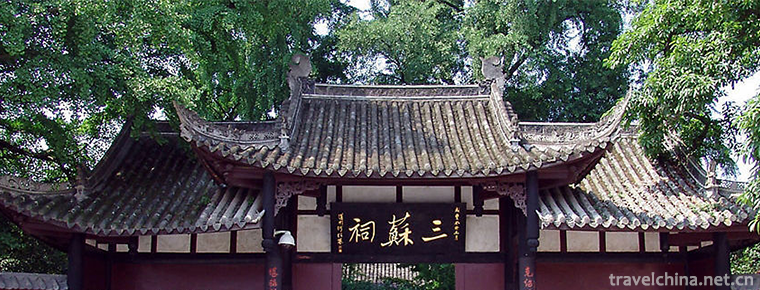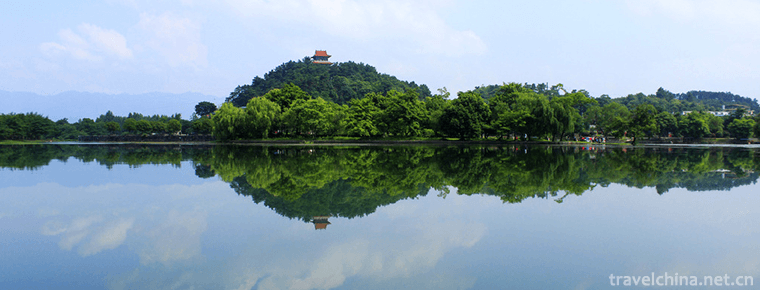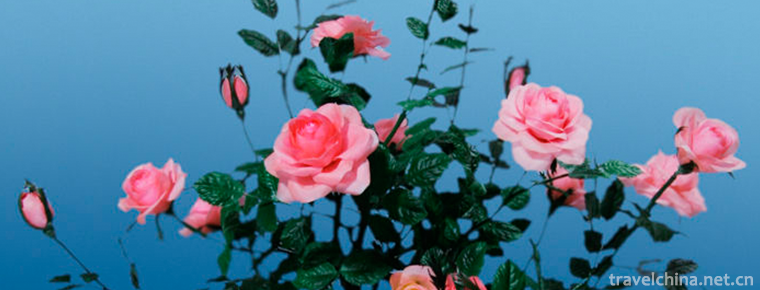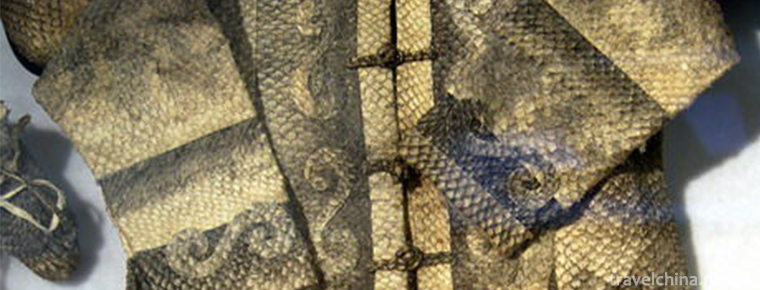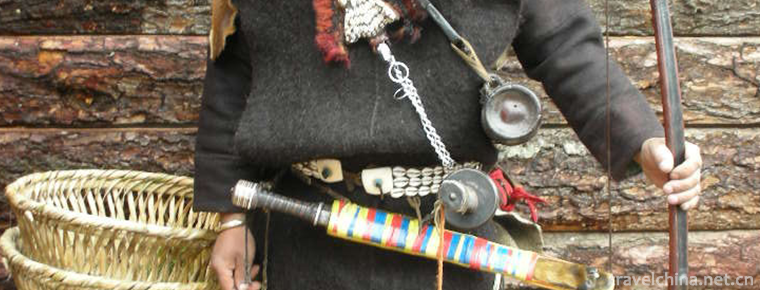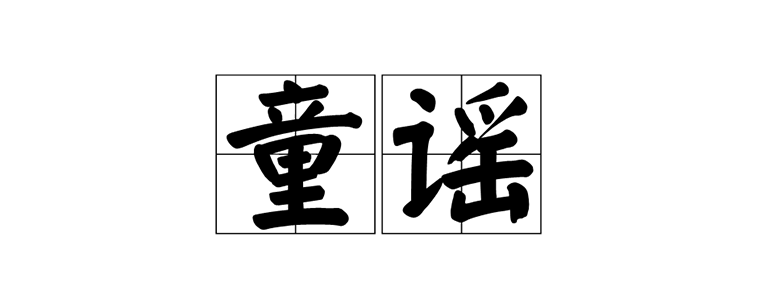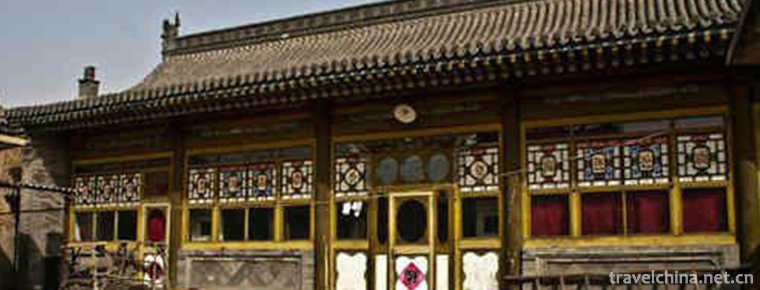Tu Wedding
Tu Wedding
The custom of Tu people's wedding in Huzhu Tu area has a long history. Tu people's wedding custom is gradually formed and developed through the struggle with nature and the long-term practice of production and life. The Tu people are good at singing and dancing, not only in their daily life, but also in the whole set of happy singing and dancing.
On May 20, 2006, the Tu wedding was approved by the State Council and listed in the first batch of national intangible cultural heritage list.
Wedding customs
The day before the wedding, the man invited two "Nashkin" (that is, the married person) who could sing, dance and speak well in the afternoon to bring the wedding gift and the clothes and jewelry worn by the bride, and pulled a white ewe (which symbolizes purity and wealth) to the wife's house to marry. At this time, the woman's family deliberately refused to open the door to Nashkin, and her aunt (young woman) sang a melodious "flower" to make Nashkin sing to each other. She also splashed water on Nashkin from the top of the door to show good luck. Only when the aunts were singing no songs or married poor did the woman open the door and invite Nashkin to her home.
Then the groom offered Hada to his parents-in-law, worshiped God Buddha, and finished drinking tea and eating. At this time, the aunts crowded in the window to sing the wedding song, the atmosphere was warm and cheerful, and then they rushed into the house and pulled their relatives to the courtyard or wheat field to dance "Anzhao". The whole wedding lasted until late at night, during which nearly twenty kinds of songs and dances were involved. A Tu wedding was a beautiful song and dance festival.
The next day, before dawn, the bride got on her horse after dressing up, covering her head with beautiful colorful scarves. Relatives of the bride scattered a handful of red chopsticks in the courtyard. Mother threw the bride's clothes out of the wall, indicating that the girl was married.
There are two ways for Tu girls to get married. One is to "go small in" and the other is to "go big in". The so-called "small out, small in", that is, the bride to her mother-in-law's house before changing her hairstyle. This way is more complex and solemn. The so-called "big out and big in" means changing the hairstyle in the mother's house and paying homage to heaven and earth immediately after arriving at her mother-in-law's house. This way is relatively simple and easy. When the bride arrives at the prescribed time, she must sit on the "warp roll", that is, on the table in the hall room, nine auspicious items such as "warp roll", cypress branches, Buddhist lanterns, milk, red chopsticks, Poria tea, grain and wool are arranged in turn. Nashkin sang "Yijie" in front of the hall door. In the way of getting married, Nashkin can wear a new bride without singing "Yijie" song and go out with his mother or sister after three circles around the trough. The bride goes to her mother-in-law's house with her sister as her bridesmaid and her sister as her companion.
When the bride gathers around the bridegroom's house to marry and send her loved ones, the bridegroom, first of all, holds good wine and Hada, and goes to pick up the bride and dismount. Behind him, at each step, a girl stood, a wine bottle and a wine bottle in hand, offering wine to the guests who had sent their relatives away. When the bride and groom enter the door, they walk slowly into the courtyard side by side with red cloth dolls in their arms.
If it is "small in and small out", then the bride goes to the kitchen god, and the selected woman starts to comb her hair, change her hairstyle, wear bridal clothes, and open her mouth. The opening ceremony is a pre-selected woman with a rolling stick wrapped in red thread. She circles around the bride for several times and says, "Bride and bride, open your mouth so that you don't get into trouble..." "
After wearing, they will worship heaven and earth. The bride and groom have to worship four times in a row and enter the cave.
Then Xie matchmaker, the Turkish people called "Wazhwa Simaila". In the past, we usually did not stir-fry vegetables, mainly wine and meat. Nowadays, there are eight dishes on display, as well as earthen and Chinese banquets, which are very rich.
The Characteristics of Lyrics
The most distinctive feature of the songs and dances in the Tu wedding ceremony is the lyrics of the songs. Different occasions, different objects, different ages and different genders use different lyrics, usually three types. One is irony, wit and humor. When Naxin went to the bride's house to sit on the Kang for dinner, the aunts sang the lyrics in the yard:
Our girl's walking hand, / as beautiful as a pheasant, / Uncle Nashing's walking hand, / as ugly as a sow, / Where did people come from? / Heads are like backs, / eyes are like oats, / mouth is like stoves, / nose is like chimneys, / ears are like wooden dishes, / necks are like cranes, / arms are like sticks, / hands are like rakes, / Narcikin of his family is like this.
The second is solemn and serious. The most representative is the song that the bride is singing:
The golden cock crows in the blue sky, / the cock crows in the earth, / The auspicious time has come, / It's time for the girl to change her hair.
Thirdly, it is exaggerated, vivid and unrestrained. For example, when the bride and groom worship heaven and earth, they give a speech to the old man to sing the song:
Golden brides, / golden bridegrooms, / entering the Golden Dragon Gate, / crossing the Golden Threshold, / holding the blessings of their descendants, / worship, / eternal eternal heaven, / God who blesses all living beings, / Khan who dominates the world, / Erbai, / gods who serve in Ayle, / mighty mountain, / illuminating mountain of disaster, / Sanbai You support you. Parents, / Ayinle's fathers and elders, / Quartet guests and relatives and friends!
Every link and procedure of the wedding accompanied by Tu's song and dance permeates the values, religious beliefs and ways of thinking of this nation, enriches all aspects of Tu's social life, embodies the unique character of the Tu people, intellect and alertness of acceptance, modesty and enthusiasm of the host, spicy and witty of the aunt, reserve and shyness of the bride all constitute a moving folk painting, like the earth. In the ethnic cultural park, a wonderful flower, colorful, exudes rich cultural charm and earthy aroma, with fresh and lasting vitality and artistic charm.
Marriage pattern
There are two ways for Tu girls to get married: one is to "go small in" and the other is to "go big in". The so-called "small out and small in", that is, the bride to her mother-in-law's home before changing her hairstyle, this way is more complex and solemn. The so-called "Big Out and Big Entry" means that she changes her hairstyle at her mother's house and worships the world immediately after she arrives at her mother-in-law's house. This method is simple and easy. When the bride arrives at the prescribed time, she must sit on the "warp roll", that is, on the table in the hall room, nine auspicious items such as "warp roll", cypress branches, Buddhist lanterns, milk, red chopsticks, Poria tea, grain and wool are arranged in turn. Nashkin sang the song "Yijie" in front of the house, and vigorously waved the skirts of her brown shirt. The bride was carried by her brother by white felt or red felt and turned three times along the round trough in the courtyard. Then she went out and mounted her horse. In the way of "going out and going in", Nashkin can go out without singing "Yijie" song and wear a new bride accompanied by her mother or sister after three circles around the trough. When the Tu brides in Minhe mountain and rivers mount horses, Ah Gu will sing horse songs. The bride goes to her mother-in-law's house with her sister as her bridesmaid and her sister as her companion. The Bridesmaid goes back with her family on the same day, while the bridesmaid waits until the bride and groom return home on the third day after marriage.
After the start ceremony, the bride's brother, brother, brother-in-law, uncle and more than ten other people formed a send-off team (called "Hong Ren Che" by the Turkish people) to send the bride to her mother-in-law's home. In the villages along the way, all married girls of the bride's family hold wine pots and glasses, waiting for the roadside greetings and toasts to "Hong Ren Che". When the line of relatives arrived at the man's house, they lined up in a neat line and sang the song "La Rollo" (Banquet Song). At this time, the man would send two people to toast and welcome the guests. The Turkish language is called "Smuttos Hu". When you come to the men's gate, you should toast and offer Hada. On the square table in front of the door, there are "Sai-mai-ri" (fried noodles and butter flowers) and a bowl of milk with cypress branches. Near the square table, there is a wooden square bucket filled with bran, with an arrow tied with Hada, which is called "Badai" in Turkish. In order to express good luck, Hong Renchen dipped the cypress branches in milk and sprinkled bran around the square, singing and dancing. Four heaps of wheat straw fires were set off in the four corners of the courtyard. Pine shacks were set on the round trough in the center of the courtyard, and the courtyard was red.
When the bride entered the gate, two young women pulled red felt or white felt in front. The bride and groom followed the blanket, men left and women right, holding dolls made of red cloth, and walked slowly into the courtyard side by side. If the bride goes in and out, she goes to the kitchen kitchen kitchen kitchen god first. The woman selected beforehand combs her hair, changes her hairstyle, wears bridal clothes and opens her mouth. The opening ceremony is that a pre-selected woman, with a rolling stick wrapped in red thread in her hand, circles around the bride for several times and says, "Bride and bride, you open your mouth, speak with gold and jade, don't go outside if you are at home, and don't talk outside like a bottle, so as not to provoke right and wrong..."
After wearing the clothes, worship the heavens and the earth, and a matchmaker or an elder of Hongrenqie presided over the recitation of the congratulations: "Aunt-in-law, like flowers, walks through the door of the golden building, comes to the courtyard inlaid with gold, and goes up to the world, gods and Buddhas, kowtows!" The bride and groom worshipped four times in a row and entered the cave.
Then Xie matchmaker, the Turkish people called "Wazhwa Simaila". People surrounded the matchmaker, singing matchmaker songs, toasting the matchmaker, and feeding him fried noodles in his mouth, butter on his forehead. Hong Renqie and matchmaker were invited to the room for a banquet. In the past, we usually did not stir-fry vegetables, mainly wine and meat. There are eight dishes on the table, as well as earthen and Chinese banquets, which are very rich.
At noon, the mother's family sent her relatives dowry in the mother-in-law's yard and dressed the groom in clothes and hats. Finally, the two sides negotiated the granny's money. Red benevolence put on a generous look, symbolically charged a few dollars, and then, while drinking horse wine, while walking out of the door...
Significance
Mutual aid Tu wedding has the characteristics of compatibility of Tujia, Tibetan and Han cultures. The content of Tu wedding song is beautiful and rich, including astronomy, geography, history, religion, deification, life etiquette and custom, with strong cultural color. It is the most prominent manifestation of Tu traditional culture. It contains the spirit, belief, value orientation of Tu people, and involves all aspects of Tu people's clothing, food, shelter and transportation. It has strong local characteristics and unique people. Ethnic characteristics, as an important carrier of Tu folk literature and art, are of great academic value to the study of Tu culture, history, folk customs and so on.
The State attaches great importance to the protection of intangible cultural heritage. On May 20, 2006, the folklore was approved by the State Council and listed in the first batch of national intangible cultural heritage lists.

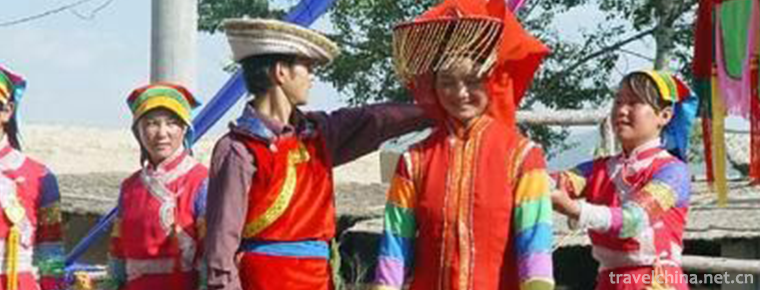
-
Sansu Temple Scenic Area
Sansu Temple Scenic Area is located in the west of Meishan City, Sichuan Province. It is a national AAAA-level tourist attraction, a national key cultural relics protection unit, and a national second.
Views: 95 Time 2018-12-19 -
Linqu canal
Lingqu, formerly known as the Qin Digging Canal, Zero Canal, Douhe Canal, Xing'an Canal and Xianggui Canal, is a great project created by the working people of ancient China.
Views: 328 Time 2019-01-30 -
Nanchong Xishan Scenic Area
Nanchong Xishan Scenic Spot, located in the west of Shunqing City, is a provincial scenic spot and a national 4A-level tourist attraction. It is the destination of "Three Kingdoms Cultural Explor.
Views: 203 Time 2019-02-25 -
Beijing silk flower
Beijing silk flower, one of the traditional handicraft products in Beijing, also known as "Beijing flower", originated in Shenmuchang Street outside Chongwenmen in Ming Dynasty.
Views: 180 Time 2019-04-04 -
Fish Skin Making Techniques of Hezhe Nationality
Fish skin making techniques of Hezhe nationality, traditional handicraft techniques of Raohe and Fuyuan in Heilongjiang Province, are one of the national intangible cultural heritages..
Views: 159 Time 2019-05-03 -
Loba Costume
Clothing custom is an important manifestation of human material and spiritual cultural life, with a long history. The Loba people live in dozens of rivers and valleys in the vast Loba area, which are .
Views: 498 Time 2019-05-15 -
Nursery rhyme
Nursery rhymes are short poems written for children, emphasizing rhythm and rhyme. They are usually spread orally. Many nursery rhymes are processed and spread according to the idioms in ancient ritua.
Views: 159 Time 2019-06-23 -
Xibo embroidery
Xibo embroidery has a long history and rich connotation. Xibo women are skillful and skillful in capturing the beautiful scenery in life. During more than 200 years of living in the western part of th.
Views: 378 Time 2019-07-01 -
Construction Techniques of Yanmen Folk House
Yanmen folk house construction technology is a traditional skill with local characteristics in Xinzhou, Shanxi Province. It was listed in the third batch of intangible cultural heritage list in 2011. .
Views: 129 Time 2019-07-10 -
Jiushi Scenic Area
Jiushi scenic area is located in Anning Township, Longmatan District, 8 km away from Luzhou city. It is named after the nine peaks in the scenic area, which are shaped like lions..
Views: 159 Time 2020-10-15 -
Leshan economy
In 2019, Leshan's GDP will reach 186.331 billion yuan, an increase of 7.6% over the previous year in terms of comparable prices. The industrial value increased by 24.288 billion yuan, with an increase of 24.288 billion yuan in the first value, and the second.
Views: 334 Time 2020-12-17 -
Nanchong hydrology
Nanchong is rich in precipitation. The average annual precipitation is 1000 mm, excluding evaporation, the annual total water is about 4.191 billion cubic meters, and the average annual runoff depth is about 313 mm. The distribution of runoff depth is generally .
Views: 348 Time 2020-12-17
